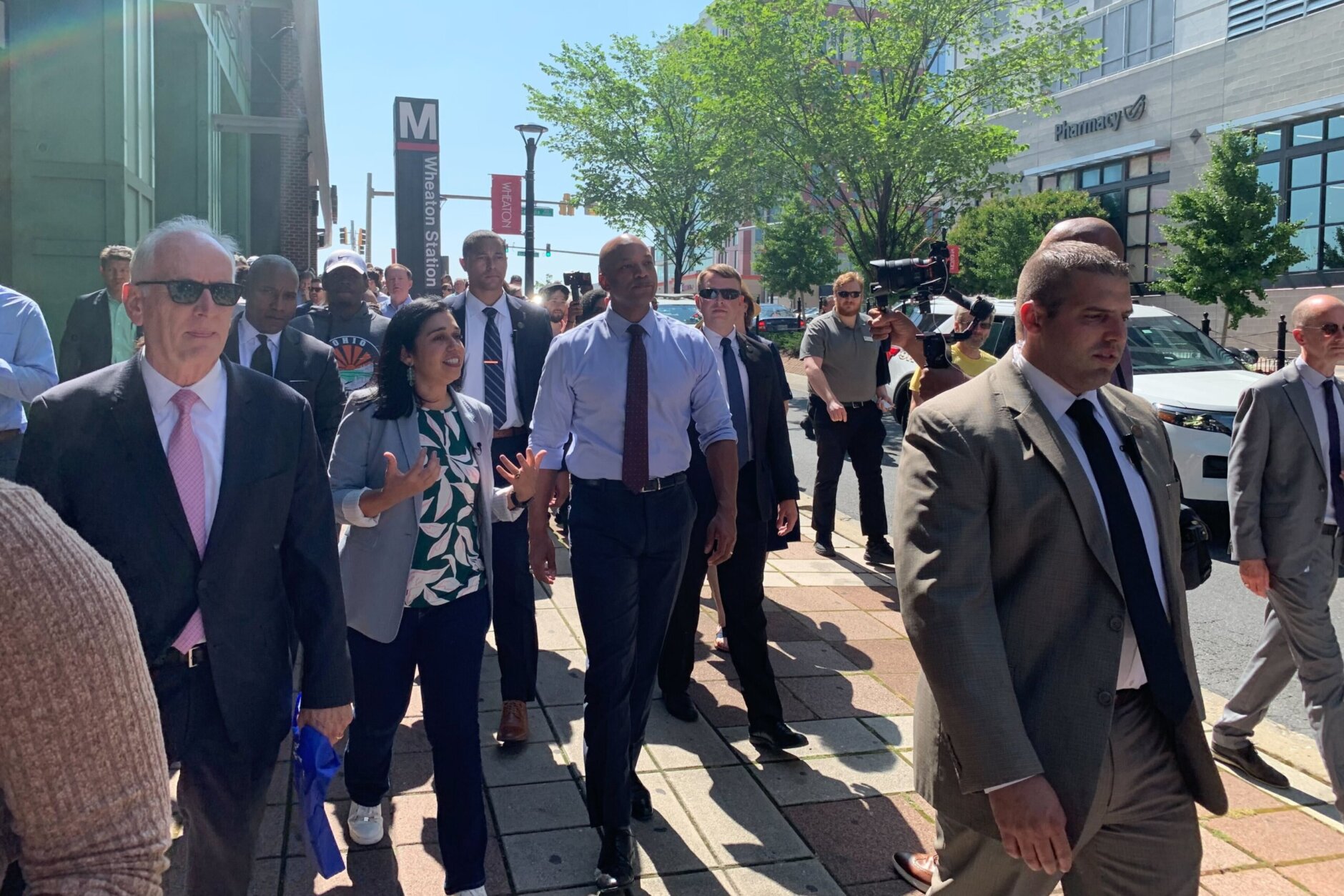
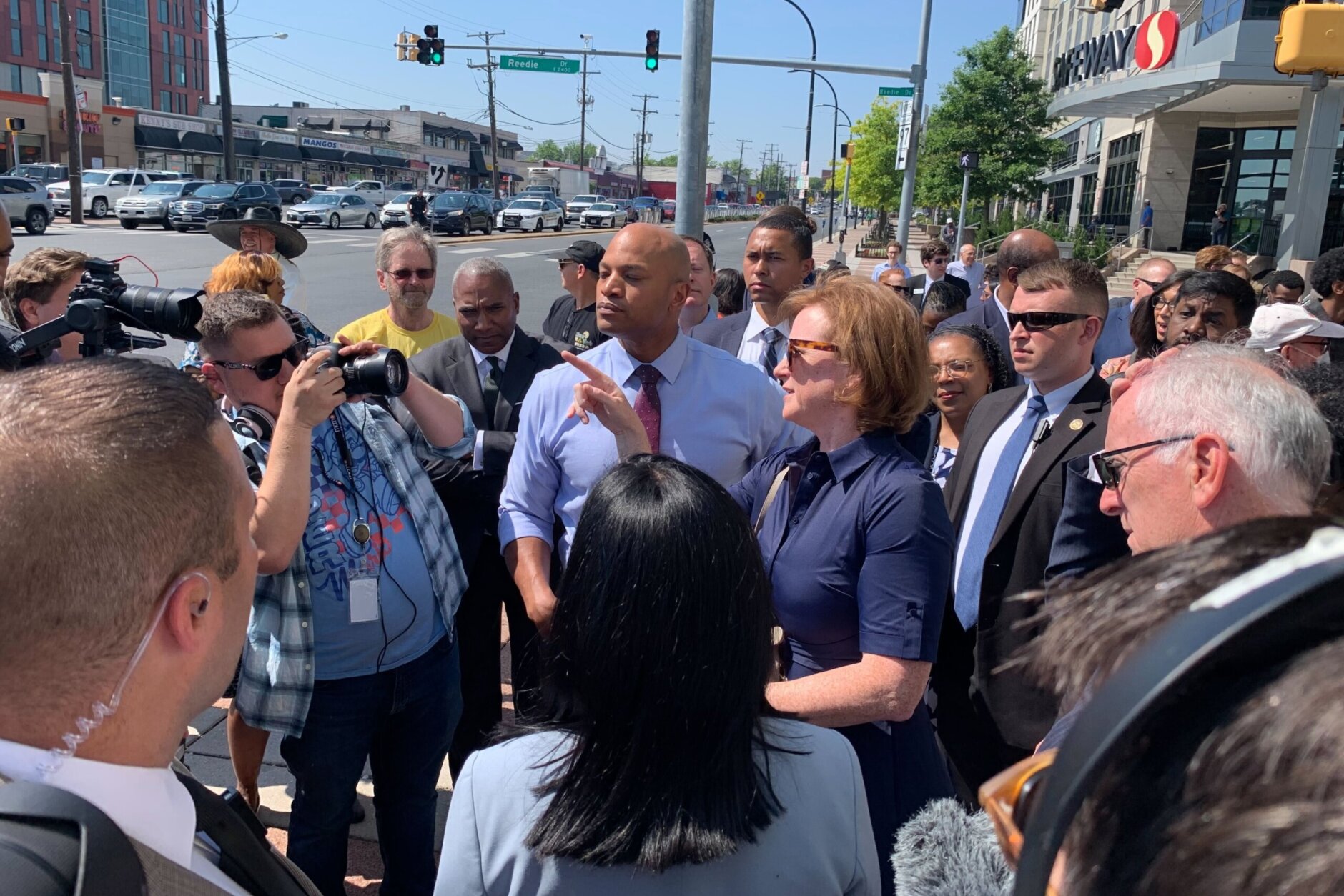
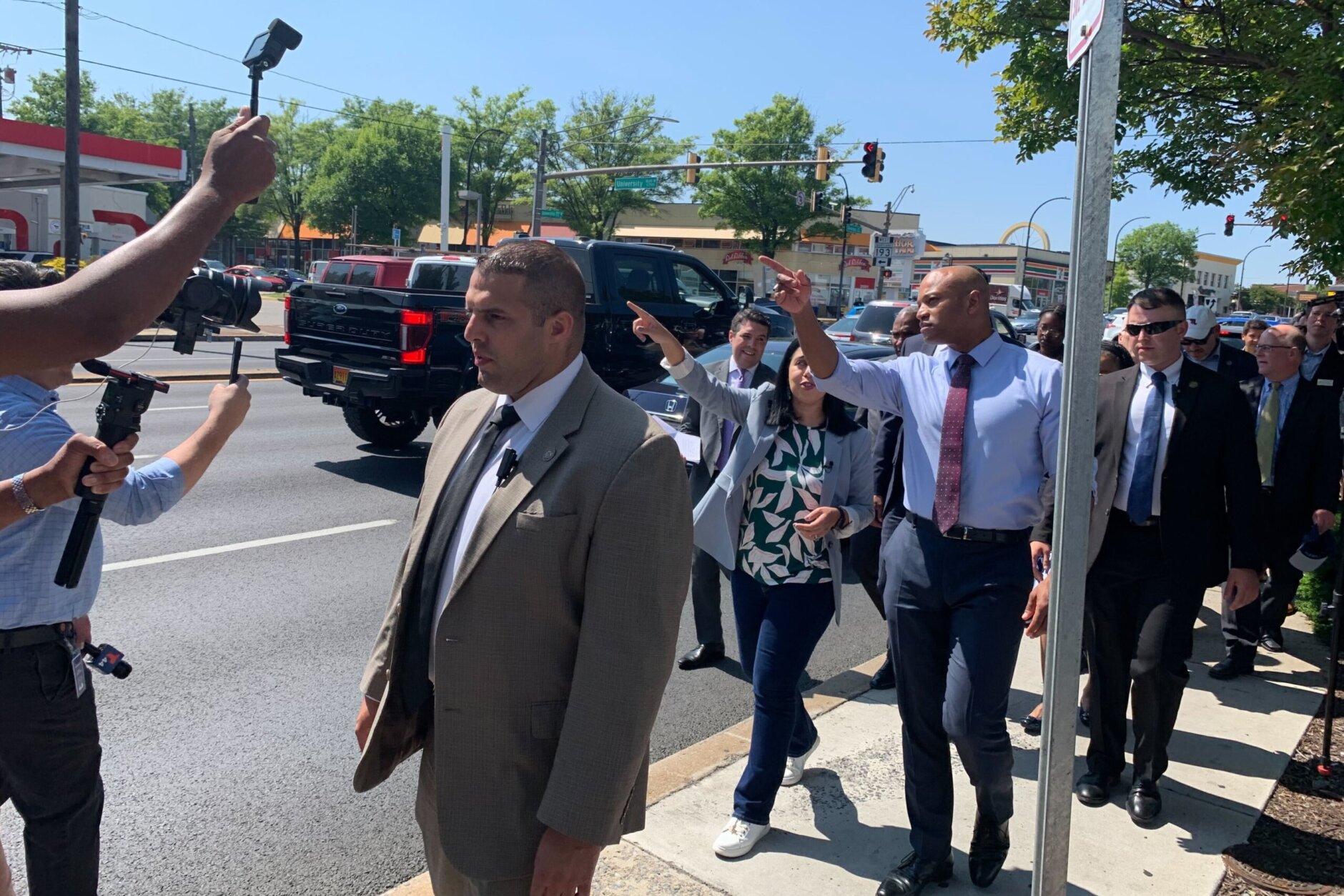
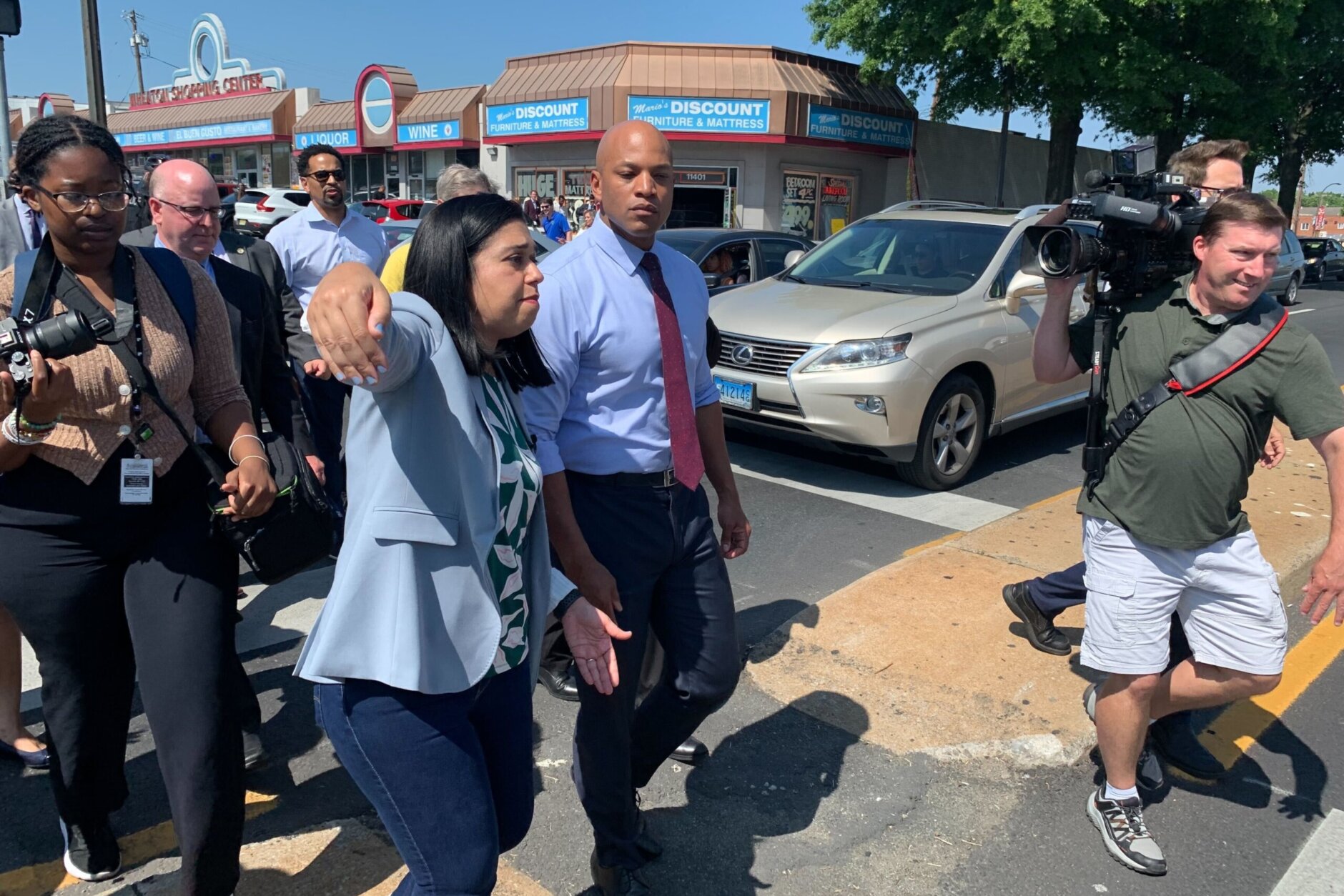

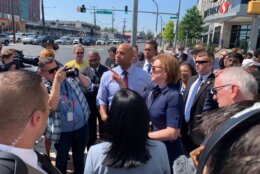
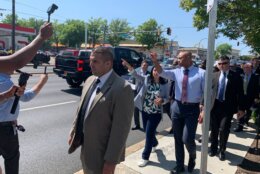

Maryland Gov. Wes Moore walked alongside two busy state-run streets in Wheaton, Wednesday afternoon and heard from leaders about the pedestrian and traffic safety concerns in the area.
Moore came to Montgomery County after being invited to walk the area by council member Natali Fani-González.
During the walk, Fani-González pointed out the narrow sidewalks and the lack of bike lanes. The council member said she’d like to see Georgia Avenue re-imagined as a boulevard that offers those safety features.
“That means making sure that you have protected bike lanes, making sure that you have BRT, which is bus rapid transit, making sure that you have enough bus shelters, making sure that you have enough bike racks so people can leave their bike safely, making sure that you have more density near the Metro,” Fani-González said.
“We want people to know that we’re prioritizing this,” Moore said about the concerns.
According to the county, between 2015 and 2022, five pedestrians were killed in the area of Georgia Avenue and Veirs Mill Road in Wheaton. During that same period, almost 30 pedestrians were seriously injured in crashes.
The council member said more lighting and tree canopies would also help make the pedestrian experience in the area more enjoyable, but since the road is state-run, the state department of transportation will have to lead any changes.
County Executive Marc Elrich, who also took part in the walk, said there are low-cost ways to get started — adding flex posts and square corners — that could prevent cars from speeding around corners. Elrich said the county would be willing to do some of these projects if granted permission from the state.
“We need more license from the state to do this, any place we think it’s appropriate,” Elrich said.
Elrich said he’s hopeful the Moore administration will be more open to working with the county than his predecessor, and he said seeing the governor accept the invitation demonstrates that.
“You know, we’ve made announcements and it’s great to have the governor come down, but having the governor come down for things like we wanted you to look at a street and the importance of a design that says something about this being on his radar,” Elrich said.
Moore said his staff will look at how it can better work with local governments and create safer roadways.
“You know, when you have people who simply want to feel safe in their own communities, and they simply want to feel safe when they’re walking into stores, or walking to schools, or going to see their neighbors or going to see their friends, it’s a basic ask that we have to do a better job of making sure that we’re providing the access for them to be able to do that,” Moore said.
The governor said in Wheaton, it is also not lost on him that a large percentage of the community are immigrants. Moore promised they will be seen and heard when it comes to their concerns getting around.
“That means making sure that all people have the basic right to movement and access in a way that is safe,” Moore said.
Moore also highlighted a driver education element to all this after witnessing several motorists breaking the rules of the road during his brief walk.
“People were not following the basic laws and the basic premise that we have in place right now. People need to follow the laws,” Moore said.
Also on the walk was Maryland Secretary of Transportation Paul Wiedefeld, who said there is a tremendous need for the community that is reliant on walking, biking and public transit, adding safety zones and even trees are possible in the near future.
“Those types of things I think we can do pretty quickly,” Wiedefeld said.
Wiedefeld said the speed limit on Georgia Avenue was recently dropped to 25 mph, and now he said more enforcement needs to happen to make sure people are following the rules of the road in the area.
He added that some projects, such as moving utilities or store parking might be a bit more complicated.








